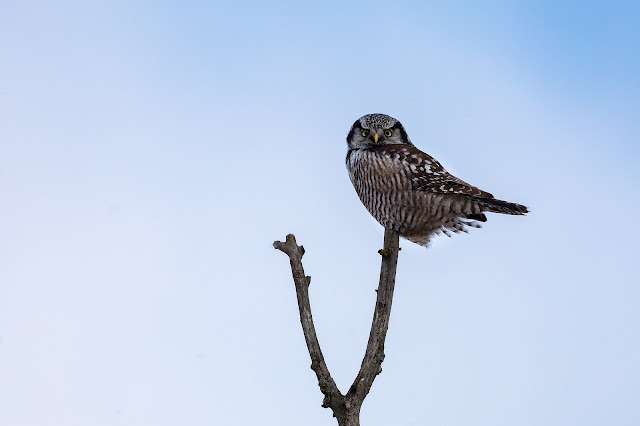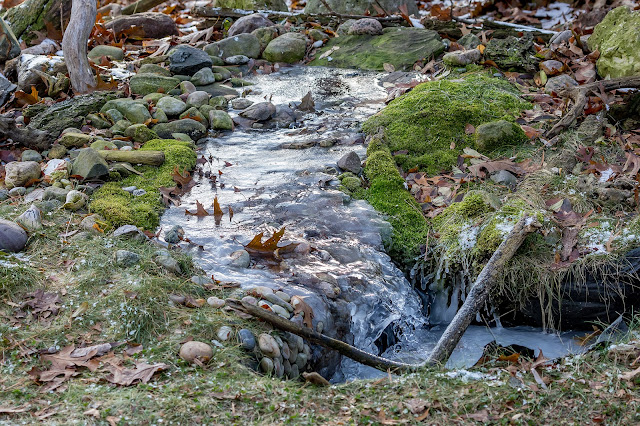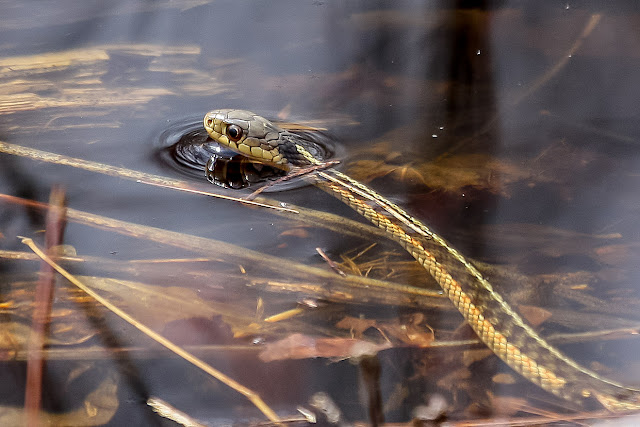Black duck.

Black Duck, December 19, 2019, Woodstock, Ontario, Canada. Anas rubripes As soon as their down feathers dry, newly hatched ducklings are able to leave the nest, a depression on the ground lined with plant materials. They follow their mother to rearing areas with a lot of invertebrates to eat and plenty of vegetation for cover. source - Cornell Lab of Ornithology.








